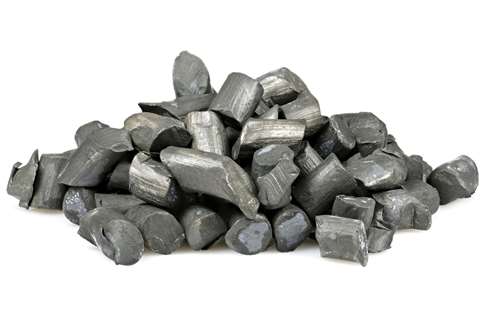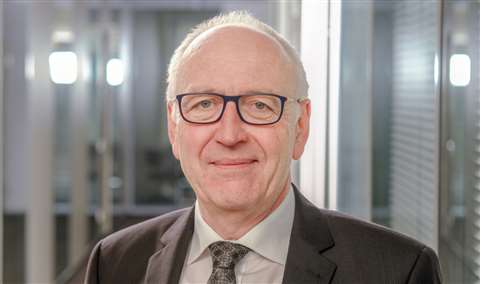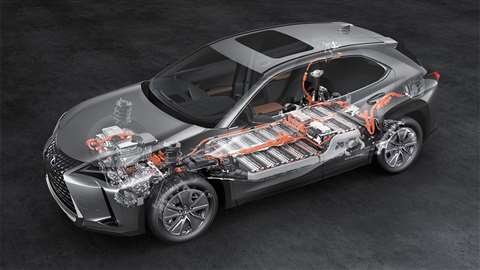Material shortages could derail the battery-electric revolution
19 March 2023
From 2035, all new cars sold in the European Union will need to produce zero emissions. While various carbon-neutral fuels are being investigated as replacements for petrol and diesel, such as hydrogen and methane, for the most part vehicle manufacturers are planning to replace fossil-fuel engines with battery power.
While fulfilling the emissions-free remit, at least at the tailpipe (if there was one), as the e-mobility switchover gathers pace the demand for battery-electric vehicles is likely to result in shortages of the raw materials needed to produce the necessary battery pack volumes.
The most well-known raw material in an electric vehicle is lithium. The alkali metal has excellent electrochemical properties which support key usability features including rechargeability and energy density. An average passenger vehicle has about nine kilograms of lithium in its battery packs; with its large pack, a Tesla Model S has about 60 kg. A battery-electric heavy goods vehicle could have four or five times that, dependent on kilowatt hour capacity.
 99.9% pure lithium - otherwise known as white gold (Photo: Adobe Stock)
99.9% pure lithium - otherwise known as white gold (Photo: Adobe Stock)
According to the World Economic Forum, global lithium reserves now stand at approximately 22 million tonnes (20 billion kilograms). Numerically at least, that should be sufficient to support production of the two billion electric and fuel cell vehicles that must replace fossil-fuel cars and trucks to achieve the International Energy Agency’s 2050 net zero target.
But surging demand will still put pressure on mining operations and processing facilities – sites which have their own issues with regards to the environment. Moreover, not all lithium is of a sufficient quality to be used in li-ion battery packs. Those issues aside, there should be sufficient virgin lithium to support worldwide demand. Yet aside from so-called ‘white gold’, availability of other raw materials could still put the brakes on global battery production – and the EV revolution.
Dwindling supplies
According to Dr Karl Lichtblau, managing director of the Institut der deutschen Wirtschaft (Institute for Economic Research) in Cologne, should global consumption of cobalt remain at its current level, there are only about 11 years of remaining reserves. Any increase in demand will obviously reduce that timeframe, including application of the tech to a broader range of vehicles.
 Dr Karl Lichtblau, Institut der deutschen Wirtschaft
Dr Karl Lichtblau, Institut der deutschen Wirtschaft
Lichtblau: “We are currently realising that electric drive concepts using lithium-ion batteries are increasingly being tested in the lorry segment, too. This is a new development, as previously all focus has been on hydrogen.”
The heavy metal has been an important element in industrial applications for decades, particularly in production of magnets. But while vehicles with combustion engines use just a few grams of cobalt, electric vehicles require about 14 kg of the material. To further complicate matters, about half of all cobalt reserves are located in the Republic of the Congo, where human rights issues related to mining could make any material sourced there unusable.
Lichtblau states that the amount of cobalt used in the cathodes of lithium-ion-manganese-cobalt-oxide batteries widely used across the European market has been greatly reduced, while lithium iron phosphate batteries use no cobalt at all – although these batteries do not deliver the same energy density as batteries with cobalt.
But while moves are being made to reduce or remove cobalt from EV batteries, both nickel and rare earth metals remain requirements. Nickel is used primarily in the battery cathode, while rare earths such as neodymium and dysprosium are critical for magnet production; in the case of dysprosium, the heavy rare earth metal improves resistance to demagnetisation.
 Mining rare earth metals - China has the largest reserves
Mining rare earth metals - China has the largest reserves
Unlike straightforward supply, availability of both nickel and rare earth metals are subject to geopolitical forces. Russia was by far the largest supplier of nickel to European battery makers before the illegal invasion of Ukraine. Sanctions have required manufacturers to look elsewhere for supply; in 2022, Tesla signed a $5 billion deal with nickel suppliers in Indonesia to secure access.
But at least nickel has other supply locations. China has both the largest reserves and is the largest global supplier of rare earth metals. The European Raw Materials Alliance reports that fully 90% of magnets used in electric vehicles are imported from China. Should, for whatever reason, China’s government slow or halt deliveries of rare earths or finished products using the metals, it would be almost impossible to replace those supplies.
Use – and reuse
Dr Matthias Buchert, head of Resources and Mobility at the Öko Institut in Breisgau, Germany (located near the Swiss border), already has a solution in mind. “It is obvious that we need a comprehensive battery recycling programme.”
To support that, Buchert is hopeful that the EU will introduce a new battery directive applicable across all 27 member states that will outline recycling requirements. But until then, there are just a handful of dedicated sites for EV battery recycling operating across the region, the largest of which can process about 12,000 tonnes of battery packs per year. Looking forward, Belgian metallurgy group Umicore has plans to open what would be the largest battery recycling plant in the world by 2026 – the €500 million site would have an annual capacity of about 150,000 tonnes.
As for the quality of reclaimed material, in an interview published by tech site Wired in 2022, Alan Nelson, senior vice president of Redwood Materials, a battery recycling specialist based in Carson City, Nevada, had this to say: “A metal atom is a metal atom. That element doesn’t know if it was previously in a battery or if it was in a mine.”
Essentially, reclaimed material is a like-for-like replacement for virgin metal. But recycled volumes will have to increase before the reclaimed material can achieve cost parity with freshly-mined supplies.
Buchert states that over the next few years, recycled material will only make up a few percent points of the total material going into new battery packs, largely due to vehicle longevity and second-life applications, such as stationary battery storage systems. But after 2035, he expects that percentage to quickly increase, to where recycled materials will constitute up to half of the required total needed by the e-mobility market. Such volumes will also serve to drive down the cost of the recycling process and with it, the cost of the reclaimed material.
That, though, must go hand in hand with battery designs which support ease of recycling, where the raw components can be extracted as quickly – and cheaply – as possible.
Replacement for li-ion
The issues surrounding material sourcing for lithium-ion batteries and motor magnets will not necessarily go away with the introduction of new technologies, but the improved performance of future replacements could mean that not so many li-ion packs will need to be manufactured.
 Toyota holds more than 1000 patents for solid-state battery tech (Photo: Toyota Motor)
Toyota holds more than 1000 patents for solid-state battery tech (Photo: Toyota Motor)
Solid-state batteries for use in EVs have been under development for about a decade. Unlike li-ion equivalents, these replace the liquid or polymer gel electrolyte with a solid equivalent made from ceramic, glass, sulphites or a solid polymer. Using a solid electrolyte means the battery packs are more compact, yet hold an equivalent amount of power to a li-ion pack. Size up a solid-state battery to that of a li-ion pack and it could deliver twice the power storage capacity – with half the recharging time. Additionally, solid state tech does not produce heat, meaning there is no need for complex cooling functionality.
So far, so good. But there are issues. To start, solid-state packs are expensive, although volume production would bring prices lower. But despite the intensive R&D, there are still issues with the composition of the solid electrolyte, specifically with getting sufficient ionic conductivity to power an EV motor.
With the potential to support up to 10 times more charge/discharge cycles than a li-ion equivalent, a solid-state battery would have a considerable service life. But they are reported to be more difficult to recycle. The designs generally use a solid lithium anode, but the physical characteristics of the metal in its pure state do not allow a shredding or crushing recycling procedure. Also, the solid electrolyte is made up of multiple material layers which are difficult to separate – in some cases the chemical elements can react with water vapour and create poisonous gas.
Should solid-state batteries replace li-ion, it would require additional investment to create new reprocessing sites – after considerable cash has already been spent to build similar sites for li-ion processing. But that could and should be balanced with the superior performance of the solid-state technology.
In the end, what will help to support the transition from fossil to e-mobility will be access to volumes of suitable material, either virgin or recycled. Failure to deliver the required raw materials risks putting an end to a transport revolution which could play a key role in helping to deliver emissions-free transport.
STAY CONNECTED




Receive the information you need when you need it through our world-leading magazines, newsletters and daily briefings.
POWER SOURCING GUIDE
The trusted reference and buyer’s guide for 83 years
The original “desktop search engine,” guiding nearly 10,000 users in more than 90 countries it is the primary reference for specifications and details on all the components that go into engine systems.
Visit Now
CONNECT WITH THE TEAM










